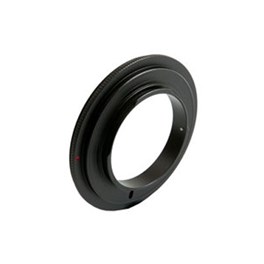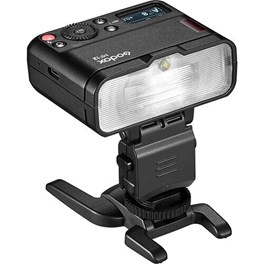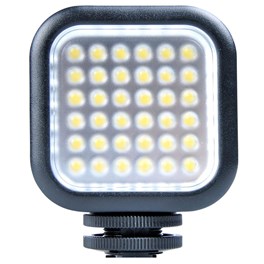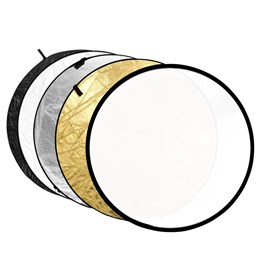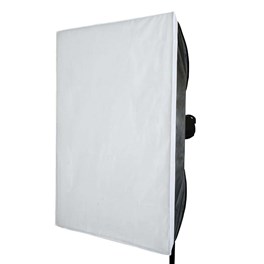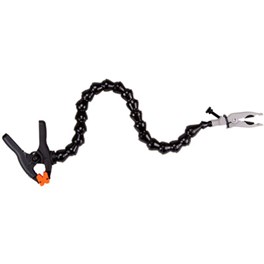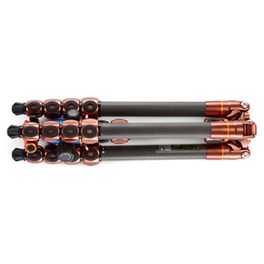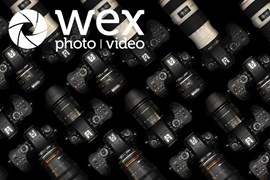
We’d go so far as to say that many of the best accessories for macro photography fall into the category of ‘essential’ rather than just ‘useful’. Macro shooting is quite a technical discipline with little margin for error, and if you don’t do plenty of planning with regard to your setup, you may find yourself struggling to get sharp, well-exposed images.
But that’s not to say that macro needs to be expensive. We know that not everybody has a great deal of extra cash to spend on their hobbies, so when compiling this list we’ve made sure to include plenty of affordable accessories that will make a real difference without costing the earth. In fact, our first two suggestions are low-cost alternatives to macro lenses (which notoriously can get quite expensive) so if you’re building a setup from the ground up, this is a good place to start.
If you’re still deciding on which camera would be best for macro photography, you can check out our guide for just that here. Or, if you have the camera and now need a lens, we have a handy guide to the best lenses for macro photography too.
Back to accessories though, we’ve kept our list just to a top ten – while there are more things we could have nominated, it felt best to keep the list just to the accessories that we feel will make a real, tangible difference to your macro photography. So, let’s get into it.
Best Macro Accessories
JJC Nikon Fit Reversing Ring 67mm
The JJC Nikon Fit Reversing Ring fits onto your Nikon mount digital SLR and is used to turn any brand of lens that features a 67mm filter thread into a macro lens. Simply reverse your lens so that the mount is facing away from the camera, screw onto the JJC reversing ring and start shooting. Since the lens is fitted backwards, there will be no control of the lens via the camera and it is advisable to use a lens that features an aperture ring so that you have more control. The JCC reversing ring is an ideal solution for enthusiasts who want to dabble in the world of macro but not spend an absolute fortune. Please note: the effect will vary from lens to lens.
£8.00 View
Pros:
- Affordable alternative to macro lenses
- Allows for experimenting with different focal lengths
Cons:
- Not available for all lens mounts
- No autofocus or electronic aperture control
- Exposes delicate parts of lens to the elements
If you’ve always wanted to try macro photography but can’t countenance the cost of a macro lens, there is a much more affordable solution – a reversing ring. This is just one option - You can find the other mount option here. A reversing ring does just what it sounds like, and allows you to mount your lens on your camera backwards. In this configuration, a standard camera lens essentially functions as a magnifying glass – presto, you’ve got a quick-and-dirty solution for close-up photography!
A reversing ring needs to fit in two ways in order to work – it needs to match both the mount of your lens, and the filter thread size (measured in mm). JJC makes a number of different filter threads for Canon EF, Micro Four Thirds and Nikon F in various thread sizes, and Nikon also produces its own for F-mount.
Bear in mind also that once the lens is reverse mounted, you won’t be able to use autofocus or electronically set the aperture. A reversed lens also produces a very shallow depth of field and reduces the light that gets to the sensor – a tripod is probably a must if you want to stand a good chance of getting sharp images. Lastly, remember that this mounting style will result in your lens’ contact points being exposed to the elements. A solution some photographers use is a rear lens cap with a hole cut in the centre – unorthodox, but it works!
Kenko DG Extension Tube Set for Canon EF (36mm 20mm 12mm)

Extension Tubes are designed to enable a lens to focus closer than its standard minimum focus distance. This has the effect of magnifying the subject so that it appears larger in the viewfinder and resulting images. Extension tubes are exceptionally useful for macro photography, allowing almost any lens to be used for close-up work, maintaining its original optical quality at a fraction of the cost of a dedicated macro lens.
£129.00 View
Kenko DG Extension Tube Set for Nikon F (36mm 20mm 12mm)

The Kenko Teleplus auto extension tube set contains 3 tubes of different length - 36mm, 20mm and 12mm - which can be combined in 7 ways to obtain various magnification. Perfect coupling with TTL metering and AE mechanisms. Autofocus may not be possible, depending on your lens type.
£129.00 View
Fujifilm MCEX-16 Macro Extension Tube

The Fujifilm MCEX-16 is a macro extension tube that sits between your Fujifilm lens and Fujifilm X camera body to increase the distance between the lens elements and the sensor, enabling users to focus on subjects much closer to the camera. Constructed out of metal, the MCEX-16 features electrical connections that allow use of AF and aperture control. Compatible with Fujifilm XF and XC lenses.
£74.00 View
Pros:
- Availability for multiple lens mounts
- Can be stacked to increase effect
- Very affordable
Cons:
- Reduces light intake, which impacts focusing and depth of field
Another low-cost alternative to a macro lens, extension tubes can be considered as an alternative to reversing rings. They slot in between the lens and the camera body (just like teleconverters) and allow you to reduce the minimum focal distance of a lens and get even closer to your subject. An extension tube can be used in conjunction with a lens that already has macro capabilities, further enhancing the effect.
Unlike teleconverters, extension tubes don’t contain any optical glass elements – they are literally just increasing the distance between the lens and the sensor. This means they won’t introduce any optical flaws into your images or reduce the quality. They will, however, reduce the amount of light that comes into the lens, which can both make it harder to focus and restrict the use of narrow apertures to increase depth of field. For both reasons, a tripod is your friend when using extension tubes. Also, remember that you will of course need to get the correct extension tubes for your lens mount - you can find our full range of extension tubes here.
Godox MF12 Macro Flash Light
The Godox MF12 Macro Flash Light is an ideal tool for close-up shots. It helps you capture sharp images at a close distance. You can mount this flash light on a lens or the included flash stand. Its head can be adjusted for easy and quick positioning. The Godox flash light has a 2.4 GHz wireless technology that promises flexibility and long-distance transmissions to capture the desired shots.
£98.00 View
Pros:
- Useful, affordable, versatile flash unit
- Fast-charging via USB-C
- Easy to mount in different configurations
Cons:
- May require extra-purchase accessories to get the most out of it
You may or may not want to hear this, but if you’re serious about macro photography, it’s pretty much essential to at least have the option of using flash. Getting enough light for a correct exposure is often a pressing concern for macro shooters, whether it’s because you’ve had to stop down your lens to get enough depth of field, or because you’re using macro accessories like reversing rings or extension tubes that have decreased your effective aperture – or, potentially, both. The best way to get more light is to inject a burst of it yourself, and the best way to do that is with a flash unit.
The Godox MF12 Macro Flash Light isn’t just a speedlight – it’s designed from the ground up to be useful for macro photographers. As such, it’s lightweight and made to work at close distances. With an optional adapter, it can be mounted directly onto the lens for an intense, ultra-close burst of light, and the slim profile of the flash means it’s easy to mount it in other ways too (using a GorillaPod, for instance). The rechargeable battery is good for 500 flashes, and once you’ve drained it you can quickly charge it up again via USB-C.
Godox LED36 - LED Video Light
Godox LED36 - LED Video Light is a compact and versatile lighting tool for professional photography and videography applications. Featuring multiple modes, this LED light allows you to cast a controlled spill of light. With various lamps on the panels, this light interlocks with each other to offer dynamic illumination solutions. Providing power to it is the AA battery compartment.
£13.00 View
Pros:
- Ultra-affordable
- Very lightweight and compact
- Constant light allows for real-time adjustment
Cons:
- No rechargeable battery (runs on AAs)
- Not as much lighting power as more expensive LEDs
While flash is hugely popular in macro photography, many shooters prefer constant LED lighting. Flash is great for freezing movement, and you’re definitely better off using it for subjects like live insects or falling water droplets. However, if you’re fine-tuning a studio setup for a macro still-life shot, you may find constant LED lighting more useful. A constant light allows you to fine-tune your settings in real-time and get the exposure correct before you hit the shutter. This can be especially useful if you’re shooting on film, and don’t have the luxury of being able to fire off dozens of test shots.
We’ve opted for an outrageously affordable LED unit here, the Godox LED36, to show you how cheaply this kind of thing can be done. There are plenty of excellent LED lighting units available with more power though, so don’t be afraid to shop around to find one that works for you.
Godox RFT-05 - Disk 5-in-1 Reflector 80cm
The Godox RFT-05 Disk 5-in-1 Reflector is a lighting tool used for in-studio and on-location shoots. It includes a reversible slipcover with black, silver, soft gold, and white surfaces and can be folded down to 1/3 of its open size for easy storage. The flexible steel ring makes it easy to open and close the disk, and the translucent disk helps create a softer light source.
£17.00 View
Pros:
- Folds down for easy transportation
- Multiple reflective surface options
- Easy way to soften light
Cons:
- May require an extra pair of hands
Once you’ve got yourself acquainted with using flash for your macro photography, the next step will be learning to control and enhance the light it creates. An easy, cost-effective way to do this is with a reflector, such as this 5-in-1 example from Godox. A cheap and simple device, a reflector does just what it says – lets you bounce the light back at your subject. This creates a much softer and more diffuse effect than you’d get from simply firing the flash directly at the subject, which makes for a more pleasing image without harsh contrast and shadows.
The ‘5-in-1’ aspect of the reflector refers to the different surfaces it offers – black, silver, gold, white and shoot-through translucent. These allow you to easily modulate the tone and intensity of your light, depending on what your subject calls for. A gold surface, for instance, creates a much warmer light which can be great for evoking a feeling of sunset. Lightweight and folding easily, the Godox LED36 is a wonderfully inexpensive addition to any macro kit – though at times you might find yourself wishing you had an extra pair of hands to hold it!
Godox SB-BW Softbox - 60x90cm
Lightweight, versatile, and robust, the Godox SB-BW Softbox - 60 x 90 cm is specifically designed to create soft and flattering light to blend with the ambient lighting conditions. Manufactured from highly-durable ripstop nylon material, this softbox is purpose-built to last.
£31.00 View
Pros:
- Simple, inexpensive way to soften light
- Lightweight but durable construction
- Includes honeycomb grid for beam direction control
Cons:
- Can be unwieldy when shooting close up
Another classic way to soften your light for pleasing results, a softbox is a time-honoured friend of the macro photographer. Easy to mount onto a flash unit, a trusty softbox like the Godox SB-BW spreads out the beam of your flash through a translucent surface, producing a much softer effect (hence the name). On the inside, the Godox SB-BW has silver reflective surfaces in order to maximise the amount of light that gets through, and there’s also a honeycomb grid that lets you control the direction of the beam.
While softboxes can be a little unwieldy when you’re working at close distances, the fact that they can be mounted directly onto your flash unit (unlike reflectors) is immensely useful if you’re working solo. This particular softbox is constructed from hardy materials designed to withstand the heat generated by flash units, and comes with a carry-case for easy transportation.
MagMod MagGrip 2

The MagMod MagGrip 2 is a durable and powerful tool designed to hold a MagMod modifier to hot shoe flashes. Featured as an improved version of its predecessor, this grip provides a magnetic-based attachment for a dependable connection. With an exclusive configuration, this grip is ideal for use with round-head flashes but also works with standard flashes.
£26.99 View
MagMod MagBounce 2

The MagMod MagBounce 2 is a compact, flexible, and durable light modifier that acts like a micro softbox for instant portability. When paired with MagGrip 2, this modifier attaches easily to hot shoe flashes. Moreover, the modifier elevates the size of any attached flash by 300%, covering a large area. The innovative magnetic configuration provides a secure and reliable connection .
£56.99 View
Pros:
- Brilliantly portable softbox for flash heads
- Can be mounted in multiple positions
- Part of a modular system
Cons:
- Requires separately purchased adapter
For another light-diffusing option, we really like the MagMod MagBounce 2. A slim light modifier constructed from silicone, the MagBounce 2 simply attaches to your flash head, and can then be angled and manipulated for soft, directional light as you please. Sleekly designed, it folds down when it’s not in use, and its textured surface ensures that light is diffused without being reduced. The silicone rubber is rated for 99% elasticity even after repeated use, meaning it won’t deform or harden over time.
The MagBounce 2 is part of a modular system from MagMod – get hold of the MagGrip 2 adapter and you can use the magnetic attachment system to easily swap in other accessories like the MagMod MagSphere 2 (also a good option for macro photography). It’s a cleverly designed system.
Wimberley The Plamp II
Finally there is a way to stabilise those aggravating windblown subjects! The Plamp II is an easily positionable arm which can be used to hold macro subjects and other useful objects. One end of the Plamp clamps to your tripod while the other grasps the object. One day in the field with a Plamp (or two) and you will begin to realise its full potential. The Wimberley Plamp II is a must for any macro enthusiast.
£64.00 View
Pros:
- Fantastic for holding subjects still
- Inexpensive and easy to use
- Length and height can be extended
Cons:
- Quite a specific use case
The humble hero of outdoor macro photographers everywhere, Wimberley’s Plamps hold a special place in our heart. If you’re wondering what on earth a ‘plamp’ could be, it’s quite simply a portmanteau of ‘plant’ and ‘clamp’, and that’s exactly what these clever things do – clamp onto plants (or similar subjects) and hold them still to be photographed.
For outdoor macro photographers, wind can be a real problem. It’s nigh-on impossible to work with precise focusing and shallow depth of field if your subjects are blowing all over the shop. With a Wimberley Plamp, you can fix the plant in place without damaging it, get the shot, and then remove the Plamp without having damaged the plant.
From the original positional arm, the Plamp system has expanded to include a version with a spiked base you stick in the ground, as well as extension parts to add length to the arm. You can find all Wimberly accessories here.
3 Legged Thing Legends Bucky Carbon Fibre Tripod
The 3 Legged Thing Legends Bucky Carbon Fibre Tripod is a portable travel tripod option that is lightweight, has a small form yet, has a maximum extended height up just under 2 meters. All three legs are detachable and can be used as monopods or boom arms. The legs are made from 8 layers of 100% pure carbon fibre and aerospace-grade magnesium alloy. They feature 3 Legged Thing's redesigned leg and column locks with newly designed shims which offer stability and security. The locks have been The O-Pads have been improved with better grip, leverage, and water displacement. Finally, the legs feature 3 Legged Thing's new Rapid Latch. These latches are made from anodised metal and use an auto-engage lock to open, close and position the tripod's legs. This tripod is perfect for those on the more who want, stability, security and style.
£349.00 View
Pros:
- Reversible central column for ground-level shooting
- Lightweight, with significant load capacity
- Fast to set up
Cons:
- Not many!
We’ve banged on about tripods a fair bit already, as they really are a non-negotiable for the majority of macro photography. However, it’s important you get the right kind of tripod rather than just buying the first one you see, as there are a few features that will make your life much easier when shooting macro images. For our money, the 3 Legged Thing Legends Bucky Carbon Fibre Tripod is a great shout for macro photographers.
One of the most important features for a macro tripod is a reversible central column. This allows you to essentially flip your camera upside down to get it very close to the ground, which is perfect for capturing macro images of plants and insects. The Bucky tripod is quick to deploy and set up, and its carbon fibre construction means it strikes the optimal balance between light weight and payload capacity. The legs are also easy to set at different angles for use on uneven ground.
This is a more expensive tripod, and if it’s beyond your budget there are plenty of other tripods available – just remember to look for that reversible central column, as it really will make things much easier.

FAQs
Do I need a tripod for macro photography?
While not strictly necessary, a tripod can significantly improve the quality of your macro shots by providing stability and reducing camera shake. It's especially useful when shooting at higher magnifications or in low-light situations.
What is a macro ring flash and why is it used in macro photography?
A macro ring flash is a specialised flash unit that fits around the front of your lens. Having the flash around the lens provides even lighting for close-up subjects. It's commonly used in macro photography to eliminate harsh shadows and evenly light small subjects for more balanced and detailed images.
How does a macro extension tube work?
A macro extension tube is a hollow, light-tight tube that fits between your camera body and lens, effectively increasing the distance between the lens and the camera's sensor. This extension allows you to focus much closer than the lens's normal minimum focusing distance. This means that you can take macro photographs without a dedicated macro lens.
What are the benefits of using a focusing rail in macro photography?
Focusing rails provide precise control over the distance between your camera and the subject, allowing for fine adjustments to achieve the desired focus in macro photography. This is particularly useful when shooting at high magnifications, where even the slightest movement can result in a significant change in focus.
Can I use a lens filter for macro photography?
Yes, you can use certain types of lens filters for macro photography, such as close-up filters or diopters. These filters screw onto the front of your lens and decrease the minimum focusing distance, allowing you to focus closer to your subject and achieve macro-like results. However, they may not offer the same image quality as dedicated macro lenses or extension tubes.
What is a diffuser and why is it important in macro photography?
A diffuser is used to soften harsh light. It reduces the appearance of shadows and highlights on your subject. This helps create a more natural and pleasing lighting environment, resulting in better-looking macro images with enhanced details and textures.
Do I need a remote shutter release for macro photography?
While not essential, a remote shutter release can be beneficial to minimise camera shake caused by pressing the shutter button manually. This is particularly important when shooting at slow shutter speeds or using a tripod, as even slight movements can result in blurry images at high magnifications.
How do we decide?
Our in-house photography experts, store staff and partners all work collaboratively to pour over our guides and tips articles. We also consider emerging trends and customer feedback to make sure our guides are always up-to-date and reflective of what people are truly looking for. By curating only the best products, our guides provide trustworthy recommendations, making it easier for customers to make informed choices with confidence.
If you would like more advice on any purchase our contact centre staff are here to help. Alternatively, you can reach us via email or social media. And don't forget. If you were to purchase anything based on our recommendations you'll be covered by our full returns policy
Buying Guides
